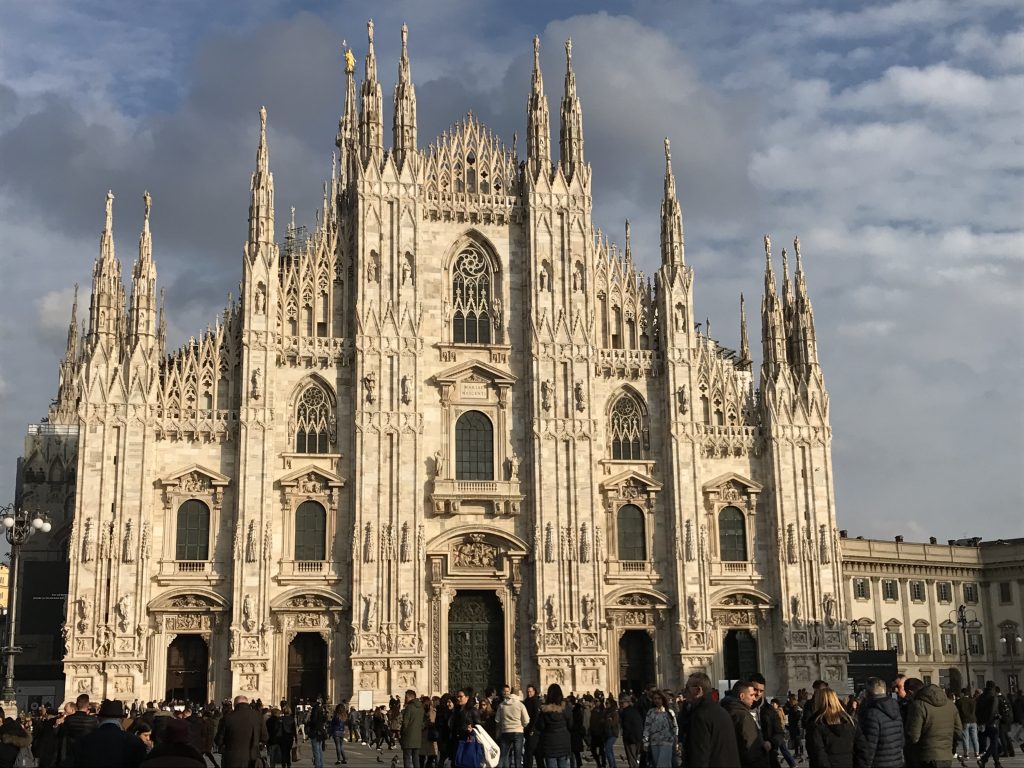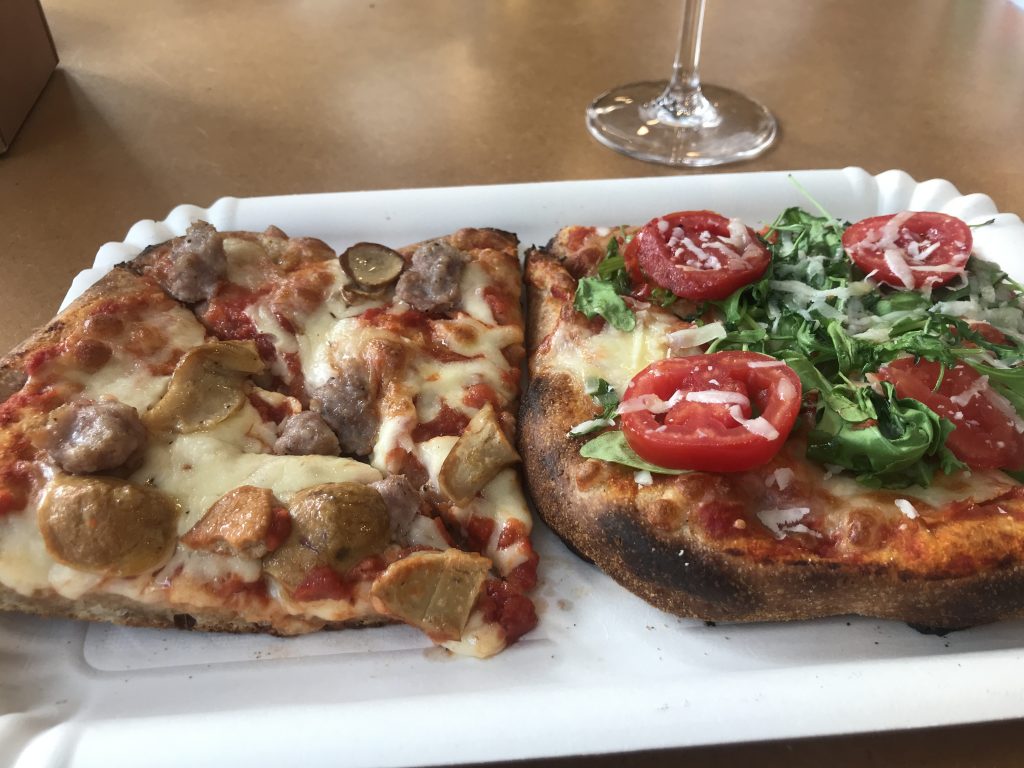I have been fortunate to travel to Italy many times, to different regions. This is a short guide to the areas I’ve been to so far. Look out for specific city and area blog posts in the future. Additionally, there are many other places to explore if you travel to Italy. Many people recognise the boot-shaped country with Sicily at the toe of the boot, and Sardinia a little further west.
If I had to summarise what I love about Italy in a few words it would be food, nature, people, history, wine, and sunshine. Each region of Italy has its own food and wine specialties, so I will highlight those for the places I’ve visited. The natural highlights of Italy include mountains, lakes, beaches, and volcanos. People are usually very friendly and warm, and I’ve been lucky to visit a lot of local friends there so received an especially nice welcome! Finally, one can appreciate all of the history that can be found throughout the country. To name a few, Rome’s Colosseum, Pompeii, and the Leaning Tower of Pisa.
Hopefully I will keep adding to the highlights over time as I travel to Italy in the future! A few cities I have not yet been to are Turin, Capri, Genoa and Bari.


Highlights
- Rome– unmissable city and the capital of Italy. Lots of historical sights, the Vatican, and nearby Tivoli with its remarkable fountains
- Milan- Italian fashion capital and a big, buzzing city with a beautiful cathedral
- Naples- large coastal city and home of pizza
- Pompeii- the famous town buried by the eruption of Mount Vesuvius in 79 A.D. Amazing to see this well-preserved area
- Venice- city of canals, the famous Bridge of Sighs, Rialto Bridge, Saint Mark’s Square and Doge’s Palace. Iconic architecture and art
- Sicily- gorgeous southern island with beaches and many ruins and historic sites
- Siena– quaint old, walled city with an impressive cathedral on top of the hill
- Leaning Tower of Pisa
- Florence- largest city in Tuscany, beautiful architecture including the Duomo and bridges over the river. Home of Michelangelo’s David
- Rimini – a quiet beach town on the east coast near to San Marino
- Bologna- historic city with stunning architecture including buildings around the Piazza Maggiore and Santo Stefano, which is 7 churches in 1
- Parma- cute city famous for its Parma Ham and Parmesan cheese
- Verona – famous as the setting for Romeo and Juliet. A beautiful, walled city near to Lake Garda
- Mantova or Mantua- small city in the Lombardy region known for its architecture
- Sardinia– beautiful islands to the west of mainland Italy. Beaches, seafood, caves and more to see. Don’t miss out on taking a ferry to Isola Maddalena
- Positano and the Amalfi Coast – picturesque, colourful beach towns on the hills
Before you go
- The largest cities in Italy are Rome, Milan, Naples and Turin
- Rome is the capital of Italy and the most visited city
- Although Vatican city is in Italy, it is a separate country
- Italians are very proud of their local traditions including cuisine
- Most regions have local food and wine specialties
- Beer is a more common accompaniment for pizza than wine
- Trains are an affordable, if not always quick, way to travel around Italy
- The weather in the north and south of Italy can be very different, so it is worth checking before you pack your bags
- Long ago, Italy had lira as the national currency, but now it’s the Euro like most of Europe
- Knowing a few words of Italian will be appreciated, such as Grazie (Thank you), Buongiorno (Good day/hello), and Ciao (Hello/Goodbye). However, in most larger cities the majority of people speak some English especially anywhere with tourists
- In my opinion, the best times to visit are spring and autumn. And then the north in the summer and south in the winter
- Driving around the Amalfi coast is only for the brave, as the roads are narrow and very windy. Even taking a bus feels like your life is flashing before your eyes
- As a woman walking around, be prepared for men to shout and follow you around a bit. Usually it is harmless though I sometimes found it uncomfortable when they were too persistent!


Transport
- ITA is the official Italian airline, after it was re-branded from Alitalia. Maybe this was not a bad thing, as I had some terrible experiences flying with Alitalia. They lost my luggage once on the way to Naples. I had to buy new (cheap) things for my trip and a small suitcase. However, when I got back to Naples airport, I found my suitcase in a pile of “unclaimed” suitcases. They then tried to charge me for taking the extra suitcase on the flight…
- Many other airlines including budget ones fly to cities throughout Italy
- ItaliaRail is the official rail company in Italy. The tickets are very reasonable for the distances and I have generally had good experiences with the rail system
Accommodation
- For cities, I recommend checking reviews for hotels or guest houses on a site like Booking.com
- AirBnB is another option to search for accommodation
- Be aware that not all hotels have air conditioning, so you may want to check for this during the summer when it can be very hot
- For specific cities, I will write posts and describe the places I have stayed

Currency
The official currency in Italy is the Euro. As of August 2023, one British pound is equal to 1.17 Euros.
I recommend to check the currency conversion just before you leave as this fluctuates



Food
Italian food is arguably the most popular and widespread food around the world. I can’t recall a country where I didn’t see at least one Italian restaurant serving a version of pasta or pizza. However, trying the real cuisine, especially in the local area can be a completely different experience! See some of my favourite Italian Recipes to recreate dishes at home.
In most cities in Italy, you will find a variety of pizza, pasta, steak, pork, fish and desserts such as gelato and tiramisu. However, the coastal areas often have more varieties of fish and seafood.
I’ll give more specific tips about food and wine in the city-specific posts since each region has its own specialties.
One should not miss trying pizza in Naples, Parmesan cheese and Parma ham, Balsamic vinegar from Modena, pork and pici pasta from Siena, and the list goes on. Also, each region has its own special wines to taste.
FAQs
Q: Do I need a tour guide?
A: No, not usually although for some places you may learn more history and culture with a guide.
Q: Do people speak English?
A: Most people in the larger cities speak English, but less so in smaller towns. It is useful to know a few phrases and have a translation app such as GoogleTranslate.
Q: Can I travel solo?
A: Yes, it is easy to travel solo using public transport. And it is relatively safe, though be aware of pickpockets. Also, as a woman I have sometimes been followed and shouted at by local men. Sometimes, they can be quite persistent so I had to go the other direction or pop into a shop to get rid of them.
Q: How easy is it to send postcards?
A: It is easy to find postcards in tourist shops in most larger cities, and easy to find Poste Italiane shops. See Sending Postcards from Abroad for details on cost and the time it took to reach the USA.
Go to Country Map
